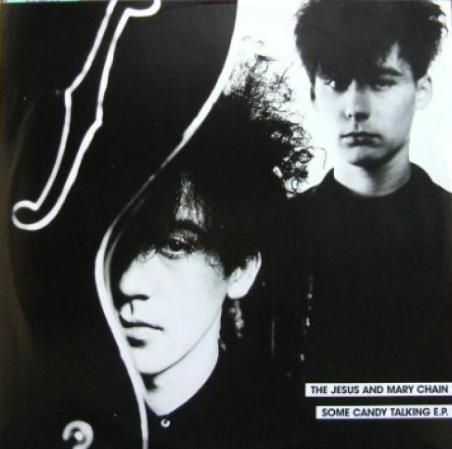 For this week’s blog post, I’d like to unpack just one sentence from Moritz Lehne and Stefan Koelsch’s paper, Toward a General Psychological Model of Tension and Suspense (which published in the Feb 2015 issue of Frontiers in Psychology): “…[T]ension experiences originate from states of conflict, instability, dissonance, or uncertainty that trigger predictive processes directed at future events of emotional significance.”
For this week’s blog post, I’d like to unpack just one sentence from Moritz Lehne and Stefan Koelsch’s paper, Toward a General Psychological Model of Tension and Suspense (which published in the Feb 2015 issue of Frontiers in Psychology): “…[T]ension experiences originate from states of conflict, instability, dissonance, or uncertainty that trigger predictive processes directed at future events of emotional significance.”
Isn’t that just the meatiest sentence? To get through this, let’s look at each of the key words and phrases: conflict, instability, and dissonance; uncertainty; and predictive processes and emotional significance. Then we’ll trot through a few examples about why each of these elements is important. (Science! Whee!)
Conflict, Instability, and Dissonance occur when the comfortable, homeostatic everyday of the character is interrupted. When people are struggling toward disparate goals, when something’s off, when things are crazy, it makes characters deeply uncomfortable, and they long for the peace and predictability they once enjoyed. This lays the groundwork for tension.
Uncertainty This aspect of tension usually arises in the form of an unanswered question (or series of related questions) that a character really wants answered. Who pulled the trigger? When will the bomb go off? Why are all the wallabies disappearing? What will happen when the boss finds out? Will I get away with stealing my husband’s last cookie while he was out skiing this morning? The experience of tension resolves when all pertinent questions are answered.
Predictive Processes and Emotional Significance Anticipation and expectations are huge in creating tension, especially when geared toward things that matter deeply to the characters. Tension is the highest when anticipated outcomes vary greatly between really good outcomes, which trigger hope, and really bad ones, which trigger fear. (These scenes are tenser than scenes with outcomes that are more neutral.) Character- and reader- expectations can either be validated (yay, you were right) or violated (surprise, you were wrong!).
These things together create a longing for resolution, and drag tension along until the situation is resolved one way or the other. To help clarify how each of these elements is important, let’s look at a few examples.
My husband had a friend in college who later married and had one son. She doted on this baby constantly, giving him everything he wanted and making certain he never got so much as a scratch on him. She never left him with a babysitter, hardly got any sleep, and couldn’t bear to let him cry for even a moment. She sounds like a typical helicopter mom spoiling her kid rotten, right? Not a lot of tension there.
Not quite. To simplify greatly, for medical reasons, if this child cried too hard, his respiratory system would malfunction, resulting quickly in permanent brain damage or death. This one fact- involving predictive processes and emotional significance- changes the situation from that of a helicopter mother of a spoiled only child to that of a harried young woman fighting desperately to keep her son alive.
It works the other way around too. Rockfish regularly experience conflict, but their inability to anticipate, to dread, to long for resolution to the conflict, makes them unable to experience tension in the way that people do. (Likewise, a fish wouldn’t be excited about an upcoming event either, unlike my kids when my husband and I start chatting about what we might have for dessert. SO MUCH TENSION.) To use another example, if you remove just the emotional significance of a situation, the tension isn’t there- because if the character doesn’t care whether or not they win the Baron Brownie’s Bread Baking Bonanza, then why should readers? Or maybe they do care, but are one-hundred-percent going to win because they’re the only entrant; in that case, there is no uncertainty in the situation, and therefore no tension. Removing any one of these aspects removes the tension, or at least weakens it greatly. You as the writer would have to ramp up the tension in some other place in some other way using all these aspects.
A final element I’d like to mention that isn’t in our above sentence (but does come up later in the paper) is control: If your character is wallowing in all this conflict, but has complete control over the situation, they’re not a person I want to hang out with for an entire book. It is the lack of control on the part of some significant character in the scene that makes it so tense. To go back to the sick baby example above, it would change the situation profoundly if the mother could easily make her son well, but chose to keep him sick. There might still be tension in the situation, but it shifts our sympathies away from the mother, making her the villain rather than the hero. (This lack of control is often most apparent when the character is trying their darnedest to exert control through actions that just keep digging them deeper and deeper in trouble.)
When writing a scene (or heck, a whole book), try using each of these elements to ramp up the tension. And if you want to dig a little deeper into the psychology of all this, read the full article, which was suuuuuper interesting and contains way more than I had the room to discuss, right HERE. You’ll feel like you’re in college again! Whee!
Until next time, happy writing!
Advertisements Share this:





